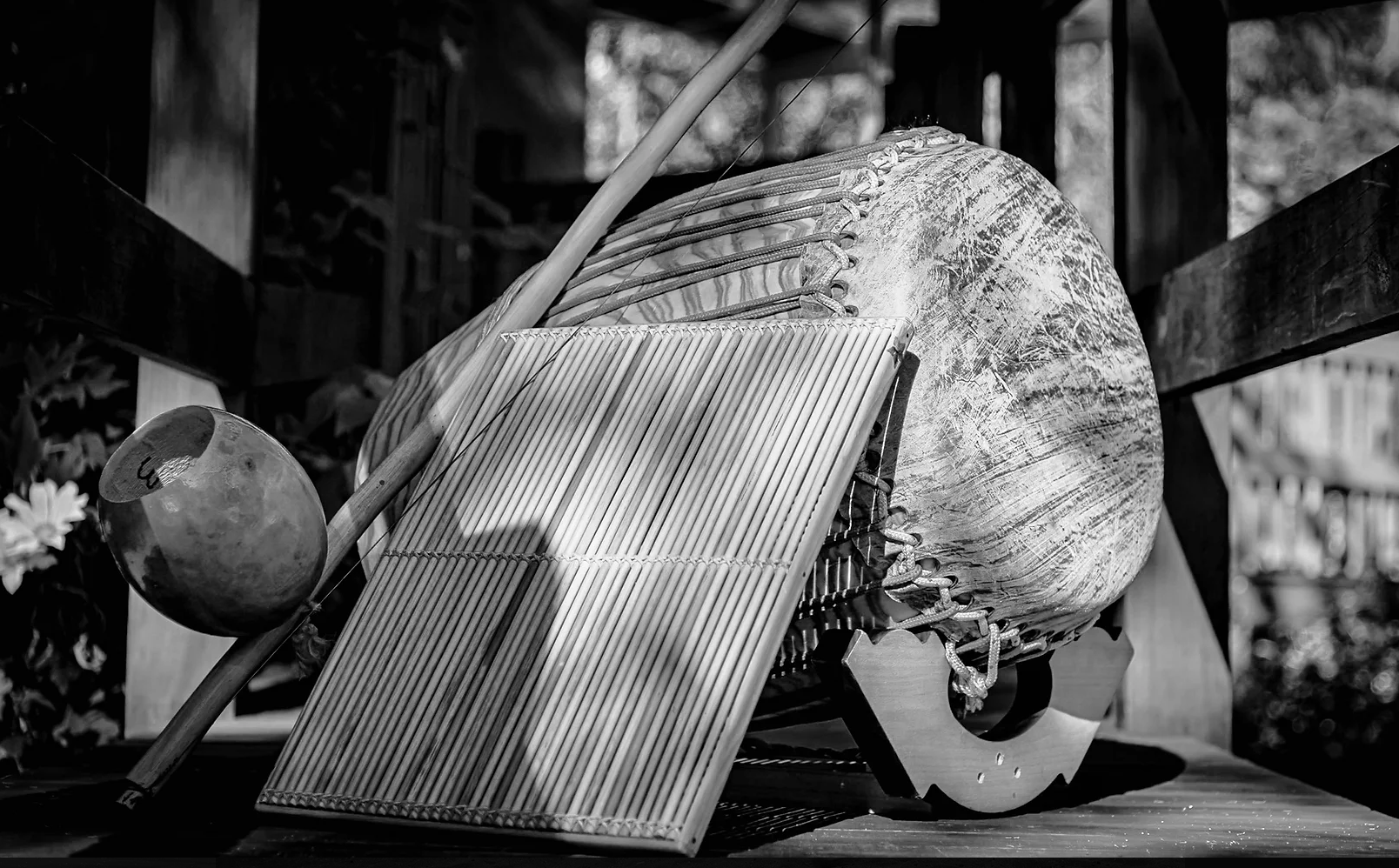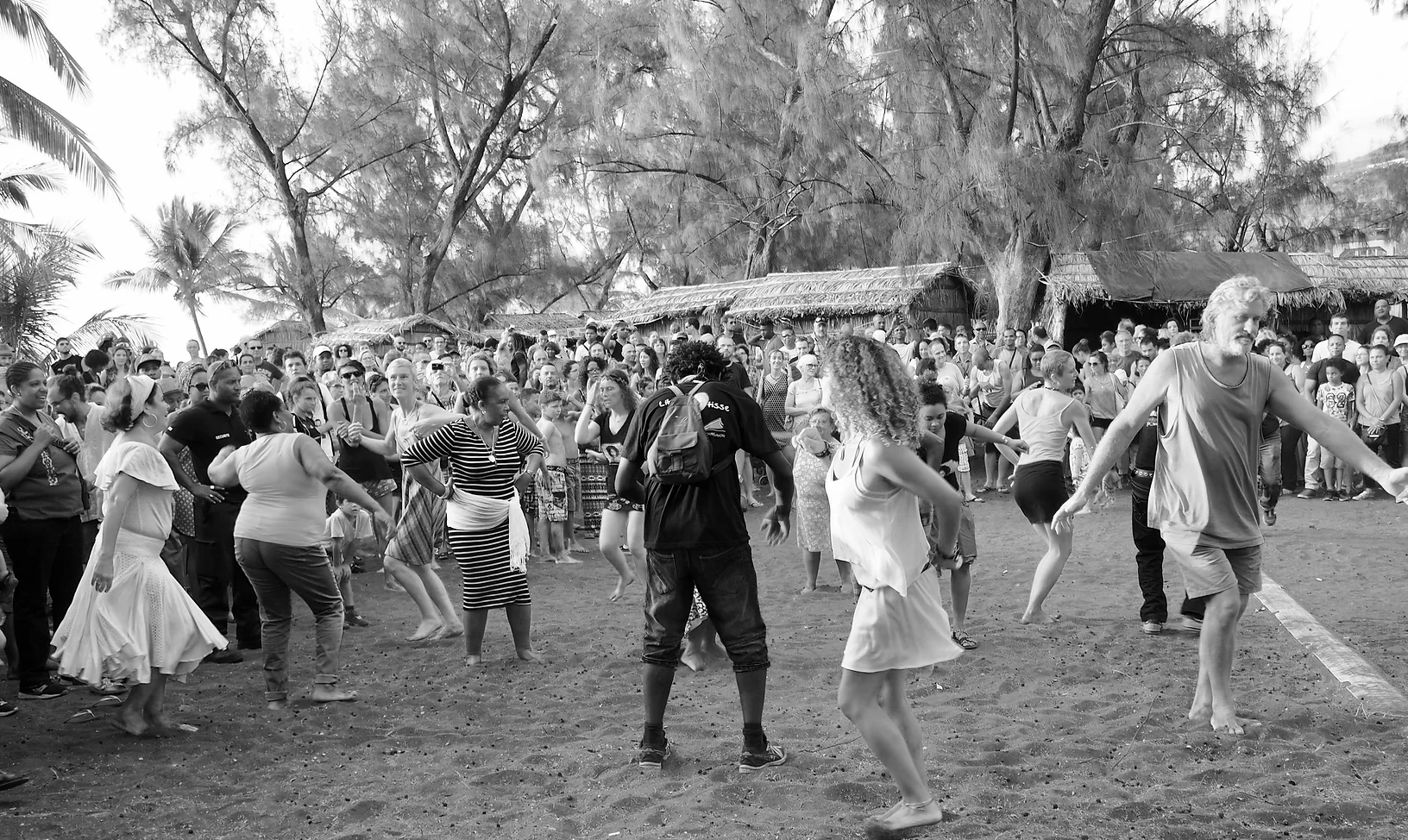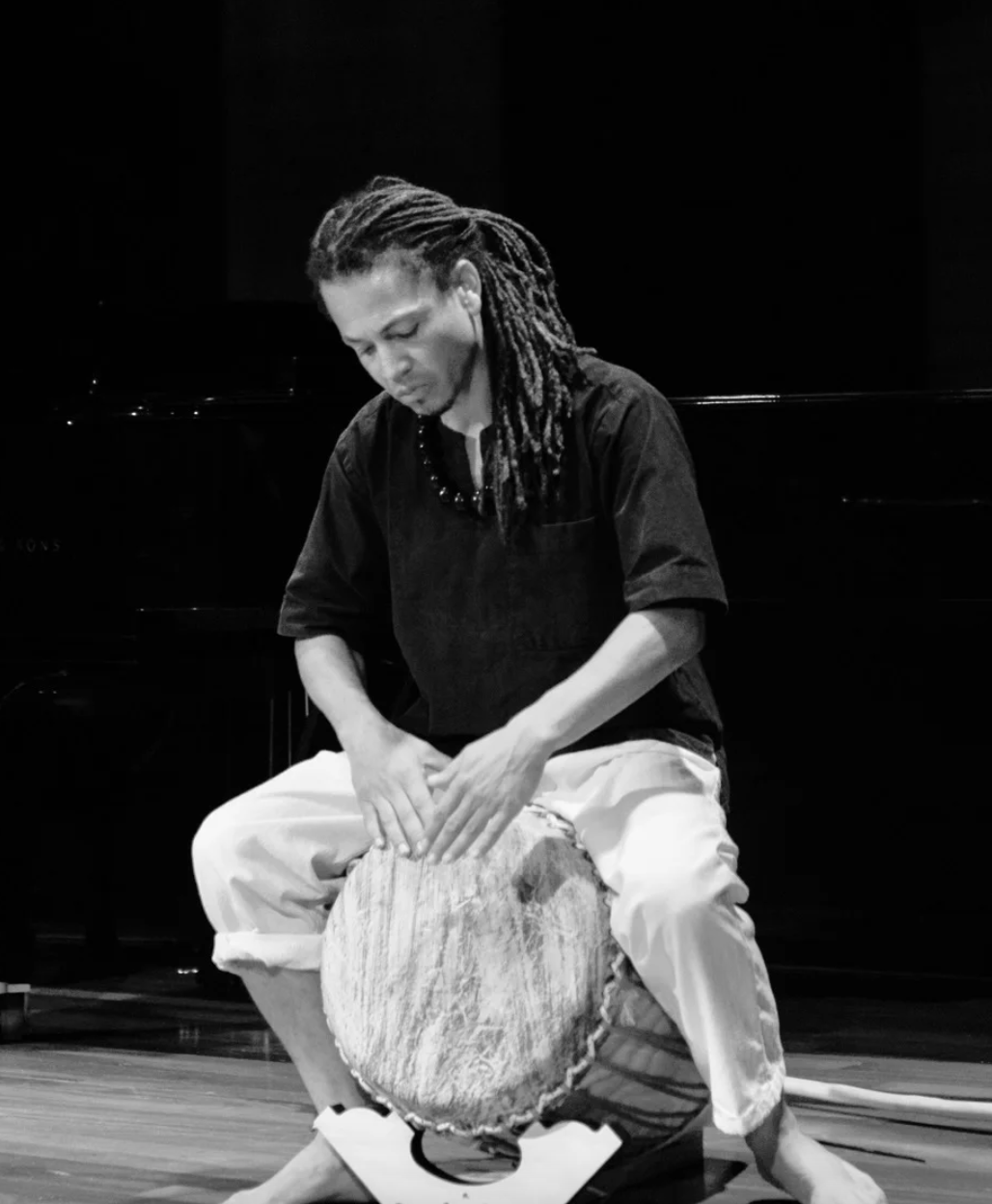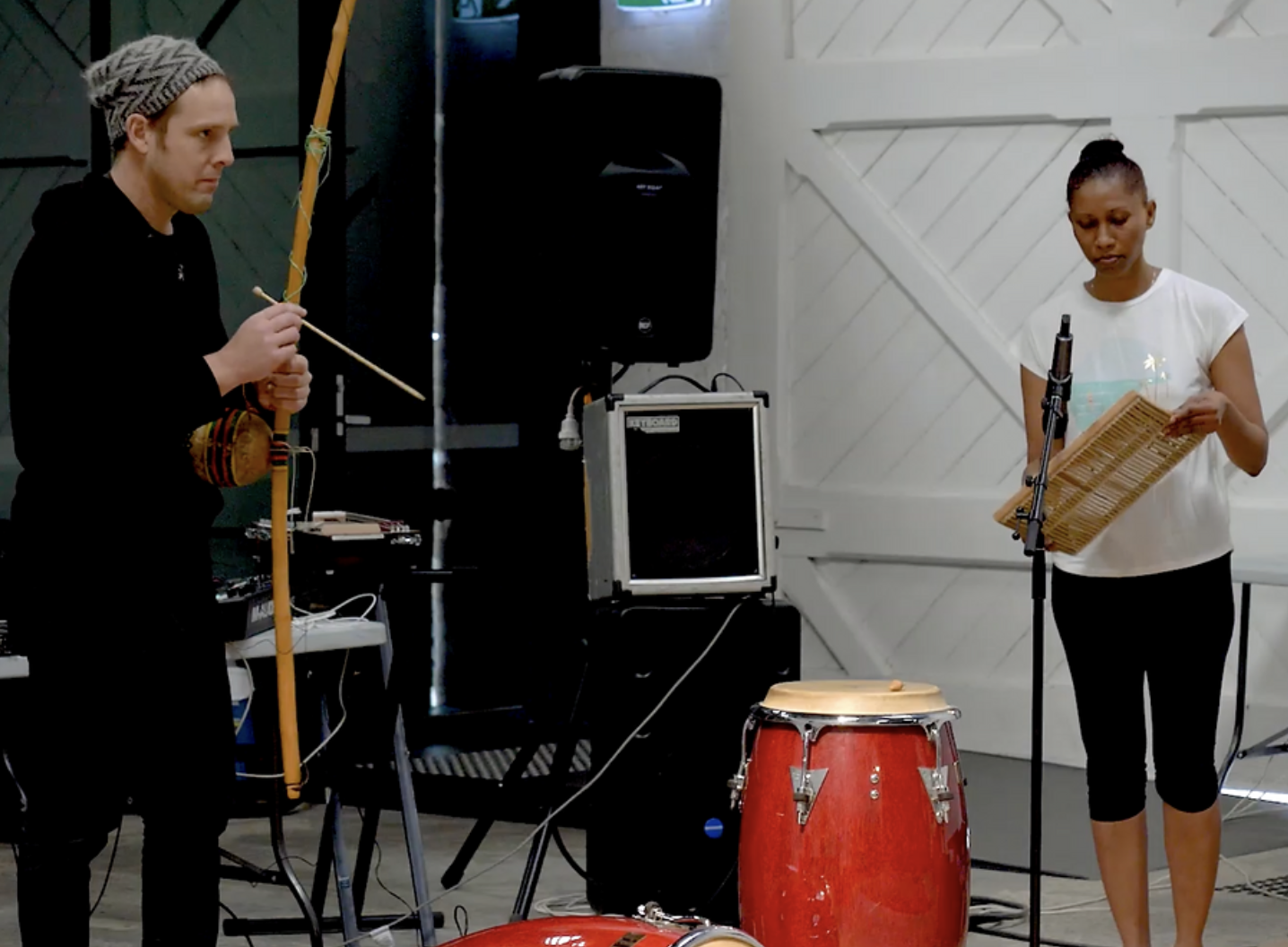About Maloya
Maloya is a traditional music and dance originating from Réunion Island. It is characterised by rhythmic drumming, call-and-response singing, and the use of traditional instruments like the kayanm, roulèr, and bobre.
Maloya has roots in African, Malagsy, and Indian cultures and was historically performed by slaves and their descendants to express emotions, tell stories, and preserve their cultural identity. For a period, it was banned due to its perceived subversive nature.
Today, Maloya is recognized as an important part of Réunion's cultural heritage and was added to UNESCO's Intangible Cultural Heritage of Humanity list in 2009. It continues to be a vibrant and evolving art form, celebrated in festivals and embraced by new generations of artists.



History
-
La Réunion is a 2,512 square kilometre tropical island situated in the Indian Ocean, between Madagascar and Mauritius. It was a French colony, called Bourbon, built on slave trade and indentured labor until the abolition of slavery in 1848. However, life remained very difficult until 1946, when the island gained the status of a French overseas département. Since being discovered and settled in the second part of the 17th Century, this deserted island has been the subject of diverse cultural influences from several continents experiencing a blend of cultures, or a pseudo cross-fertilisation of cultural, social, economic and ethnic specificities, including the colonial past that still lingers with the relationship to France.
La Réunion is a multicultural society comprised of people who were originally from Europe, Madagascar, Mozambique, India, China, and the Comoros. The accommodation and blending of these cultures over time has resulted in a new language and culture simply called ‘Créole’. Although French is the official language and the residents of the island are administratively French (and European) citizens, for many Réunionese people Créole remains the language of everyday life. Today, the word Créole is often used to describe people with a mixed ethnic background. The Créole language possesses a different grammar compared to French and draws vocabulary mainly from French language, but also from other languages such as Malagasy and Tamil.
-
Maloya, an obscure form of expression sometimes involving trance-like state, emerged in a context of captivity, forced displacement, isolation and hard labour. It came to exist as a necessity to cope with everyday life for the enslaved population. Before the abolition of slavery in 1848, slaves were not allowed to read or write. Customs, beliefs and rituals were transferred down the generations orally and it was difficult to conserve this heritage in La Réunion. Maloya, performed secretly, actively reclaimed and reflected the difficulties of everyday life as a slave, working in the cotton, tobacco, sugarcane and vanilla fields, through lyrics, rhythm and movement.
For centuries Maloya was banned by the French authorities for what was seen as anti-catholic, devil’s dance and music with rebellious historical and political connotations. In the late 1970s, the need for a symbol of unity to fight against the difficulties of life on an isolated island was recognised by the Communist movement. This movement chose to unify the population by emphasising its shared colonial past through the popular but banned Réunionese art form: Maloya. Combining music, dance and song, Maloya represents much more than simple entertainment. Maloya acted unofficially as a type of unification of the descendants of the slaves. The dance and music art form were officially reinstated by France in 1981. On October 1st 2009, 167 years after the abolition of slavery in La Réunion, Maloya was inscribed on the Representative List of the Intangible Cultural Heritage of Humanity UNESCO.
Research
-
Maloya was born of the plantations. It constituted a way of escape and symbolised the desire for freedom. This desire for freedom is materialised in the flexibility of improvisation in both the music and dance. Therefore, the musician or dancer is not confined to any particular expectation in melody or phrase and can develop and expand the rhythm and movement according to however they feel at that particular moment. The liberating aspect of this improvisational element to Maloya represents a challenge to me as both a teacher and researcher. Thus in teaching Maloya I have a commitment to pass on my embodied knowledge with some parameters to understanding how to be skilled in the improvisation, but it is also incumbent on me not to interfere too much in the dancer's improvisation process.
-
Maloya is traditionally improvised. The lyrical themes range from migration, spiritual and genealogical ancestry, slavery and resistance but also to the beauty of the island and the everyday of sharing and living together in the tropics. Muriel argued that Maloya embodies the spirit of the Réunionese population; the people embrace it as a powerful symbol of freedom not only from colonial oppression but also from the challenges of life on an isolated tropical island. An exploration of Maloya is an investigation of slavery, ritual and the belief systems of La Réunion.
This paper discussed Muriel's PhD research into Maloya including the auto-ethnographic accounts of dancing the dance of La Réunion.
-
Maloya is a unique communication system, which consequently alienated the French colonial authorities and landowners was unofficially banned until 1981. Accordingly, the importance of acknowledging the past and preserving the cultural heritage by passing this artform from one generation to the next is significant. In 2009 maloya has been recognized by UNESCO as pertaining to have intangible cultural heritage value. At a glance, the dance invites the body parts to converse with each other similarly to the different ethnicities in contact on the plantation. The music, rich of various intertwined influences, uses complex rhythms with call and response patterns and melodic intervals.
This paper discussed how this powerful symbol of freedom from colonial oppression is a celebration of multicultural contemporary 'postcolonial' La Réunion, and how performing Maloya dance and music means to perform Réunionese identity/identities.
-
‘Postcolonial’ La Réunion – an overseas département and region of France – was host to extensive plantation activities in the 17th Century. It became a land of exile to slaves and indentured labourers and as such saw various forms of violence. Displaced essentially from Madagascar, Africa, and then India and China, most labourers experienced a degree of social, physical, sexual, verbal, psychological and spiritual/religious violence. The diverse mix of ethnicities, cultures and customs led to an intercultural dialogue, which in turn gave birth to the Réunionese Créole culture and in particular Maloya. Maloya is the Réunionese emblematic dance and music art form gathering of ancestry, slavery, resistance and resilience.
This paper discussed Muriel's research into Maloya as a tool of intercultural dialogue. She argued that Maloya can be used as a tool to develop intercultural understanding by allowing the practitioner to loosen their cultural ties, open an intercultural dialogue, acknowledge and reconnect with their identity/identities.
-
Renegotiation of identity in Australia through the Reunionese art form: Maloya. In N. Belford & R. Lahiri-Roy (Eds.). Asian Women, Identity and Migration: Experiences of transnational women of Indian origin/heritage (1st ed.). UK: Routledge
This chapter explores my experiences and negotiation of Muriel's identities as a female Maloya artist/researcher/teacher. From the theoretical lenses of a ‘third space’, ‘hybridity’ and ‘bastardy’. She explores how Maloya is part of a constructed space in negotiating her identity. Migration to Australia was an opportunity to scrutinise and question her identities as she was born in Réunion island. Being in Australia, she reviews her stance in relation to her performance and teaching of Maloya as part of her cultural heritage and identity. The discussion examines the negotiation of her identity through Maloya as embodied through a ‘third space’ yet with changes.



Collaborations
-
Maloya Music
Research ShowcaseJackson Vickery is a freelance percussionist and educator based in Perth, Western Australia. He specialises in contemporary and world percussion and has studied at the University of Western Australia Conservatorium of Music. Jackson and Muriel collaborated on a different form of presentation for the WAAPA Research Showcase 2019, involving VoiceOver that told the history of Maloya, improvised Maloya percussion to accompany the storytelling and improvised dancing. To conclude the showcase they did two live Maloya songs.
Performers: Jackson Vickery, Carole Katz, Lucette Barbier, M-Muriel Hillion Toulcanon -
Maloya Dance and Music Workshops
Research ShowcaseAxel is a Réunionese artist Muriel invited to Perth in 2017 to facilitate Maloya dance and music workshops for her students, so they have the opportunity to experience Maloya with a different teacher. With Axel, she also collaborated on a Maloya dance piece to be presented at the WAAPA Research Showcase 2017. This particular piece explored the different Maloya rhythms using instruments, singing and improvised dancing.
Artists: Axel Sautron, Benjamin Hillion, Michael Boase, Gabrielle Canny, Maëlys Joli, M-Muriel Hillion Toulcanon -
Maloya Dance
Research ShowcaseInge is a professional dancer specialised in dance education, contemporary Euro-American and West-African Dance. Inge and Muriel collaborated on a Maloya dance piece to be presented at the WAAPA Research Showcase in 2016. This dance depicted the ritualistic aspect of Maloya, involving Malagasy spirits and Moring, the Réunionese martial art. They included improvised parts, but also some choreographed sections.
Artists: Inge Van Winkel, M-Muriel Hillion Toulcanon
Projects







